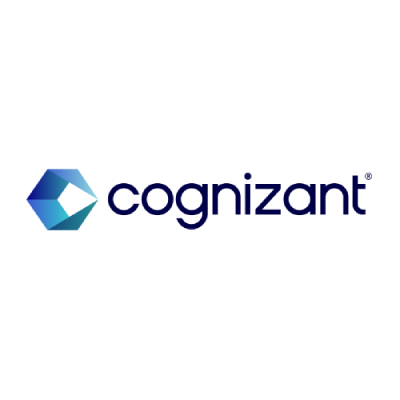The future of payment hubs is customer-centric, with seamless experiences and value-added services as key differentiators.
To navigate this complex landscape and unlock new opportunities, financial institutions must embrace modern technologies and open ecosystems, write Balbir Rathod, Head of Payments and Corporate banking Consulting at Cognizant in ASEAN, and Shreegopal Ramakrishnan, Head of Cards and Payments Consulting at Cognizant in the UK & Ireland.
The world of payments is undergoing a rapid transformation driven by evolving customer expectations and technological advancements. Financial institutions must adapt their payment hubs to stay competitive as users demand real-time, seamless, secure payment experiences. The shift towards digital payments, accelerated by the COVID-19 pandemic, and the global initiatives around migration to real-time payments, have further heightened the need for modernisation.
The future of payment hubs is centred around the customer – whether an individual consumer or a corporate client. Customers expect instant settlements, a frictionless experience across all channels, transparency, and lower costs. They want the flexibility to choose from various payment methods, from traditional cards to digital wallets and pay-by-bank solutions. Moreover, customers expect personalised offers, loyalty rewards, and value-added services that enhance their overall banking experience.
Innovation in the payments industry is happening at an unprecedented pace. Initiatives like the UK’s Regulated Liability Network (RLN) – a new strategic roadmap for payments being piloted – are paving the way for the future of tokenised finance. The RLN platform is supposed to be on-chain, programmable 24/7, and enable final settlement in sovereign currencies. Further, the architecture is designed to coexist with existing payment rails, such as Visa, Mastercard, and faster payment systems, indicating a future where traditional and innovative payment methods seamlessly integrate.
The direction of travel is clear: payment hubs must evolve to meet the demands of an increasingly digital and connected world. This evolution aligns with the three horizons approach outlined in Cognizant’s Future of Payments ebook where financial institutions must simplify and build a modern payments core (Horizon One), embrace open ecosystems and value creation (Horizon Two), and prepare for “everywhere, anything” of value (Horizon Three).
Evolving payment hubs
Payment hubs have undergone three distinct phases of evolution, each driven by the changing needs of customers and the financial industry.
Phase 1: Consolidation and standardisation
In the early 2010s, global leaders sought to consolidate their payment engines and standardise processes across different clearings and geographies. This phase aimed to streamline operations, reduce costs, and gain a single view of liquidity and payment flows. Banks realised that having separate payment engines for different clearings was inefficient and harmed their ability to provide a seamless customer experience.
Phase 2: Real-time payments and regulatory compliance
The second phase was driven by the adoption of real-time payments and the need for regulatory compliance. The introduction of faster payment schemes in the late 2000s, such as the UK’s Faster Payments Service and the European Single Euro Payments Area (SEPA) Instant Credit Transfer, launched in 2017, put pressure on banks to modernise their payment infrastructures.
Banks began considering introducing new payment engines or holistically assessing their existing landscape to meet these requirements. The introduction of ISO20022 as the de facto standard for instant payments plays a crucial, ongoing role in this phase, providing a common language for the payment community to interact seamlessly.
This phase is characterised by open banking and the rise of API-driven ecosystems. Regulators worldwide, such as the European Union with the revised Payment Services Directive (PSD2) and the UK’s Open Banking initiative, have mandated banks to open up their systems and share customer data with third-party providers.
Phase 3: Beyond Open Banking and multi-asset tokenisaton
Now, players are looking beyond Open Banking by embracing the emergence of new payment methods like central bank digital currency (CBDC), multi-asset tokenization and newer partnership models like CBDC interoperability, domestic infrastructure bilateral arrangements, BIS initiatives like Nexus that connect central bank infrastructure to move money faster, and the recent EU mandates around instant payments. This phase also sees the rise of digital identity solutions, which are crucial in enabling secure and seamless payment experiences across various channels and platforms.
Banks are exploring ways to leverage payment data insights, forge partnerships, and create value-added services. They also aim to embed payments into non-financial customer journeys, such as e-commerce checkouts or ride-hailing apps, to provide a seamless and convenient experience.
This phase also sees the emergence of alternate payment methods, such as digital wallets – already widely adopted – super-apps, and pay-by-bank solutions. For instance, the European Payments Initiative’s instant payment solution, Wero, promises pan-European, borderless banking and instant payments.
Challenges and opportunities for banks
Undoubtedly, payment complexity is growing exponentially. Historically, many payment solutions were designed for simpler use cases and are struggling to keep pace with the rapidly changing landscape. Moreover, the increasing number of customisations developed to address specific needs adds to the complexity of migrating to newer technology stacks, as banks often lack the resources and expertise to manage these transitions effectively.
This current reality and the direction of travel pose a significant challenge for financial institutions, as their legacy systems often lack the flexibility, scalability, and interoperability needed to support the diverse range of payment methods, channels, and currencies demanded by customers today.
As a result, banks risk slower time-to-market, increased payment processing costs, and a sub-optimal customer experience, potentially leading to lost business opportunities and market share in an increasingly competitive environment.
Local, regional, and global banks face different and specific challenges and opportunities when modernising their payment hubs.
Local banks
Local banks often struggle with low straight-through processing (STP) rates due to their legacy technology stack, manual operations, and disconnected back-end systems. This means they have a high proportion of payment transactions requiring manual intervention, especially during peak load times when transaction volumes are high.
As a result, local banks face inefficiencies, increased costs, and potential delays in processing payments, which can negatively impact the customer experience. To address this challenge, local banks should aim to improve their STP rates by automating processes, modernising their technology infrastructure, and enhancing regulatory compliance.
However, local banks can actually benefit from having less legacy infrastructure than compared to regional and global banks. This allows them to adopt modern, industry-standard solutions more quickly compared to banks with extensive legacy systems. By not being burdened by complex, outdated infrastructure, local banks have the opportunity to leapfrog traditional payment technologies and directly embrace cloud-based platforms, API-driven architectures, and ISO20022 standards from the outset. This advantage enables local banks to reduce costs, improve efficiency, and offer their customers a more competitive and innovative payment offering without requiring lengthy and expensive transformation projects.
Regional banks
Regional banks aspire to become global players. To achieve this goal, they are investing heavily in payment transformation initiatives and partnering with top-notch industry players and fintechs. Regional banks have the appetite and resources to acquire smaller businesses and expand their reach, as evidenced by UOB’s acquisition of Citibank’s consumer banking business in several Southeast Asian countries.
Regional banks face the challenge of integrating their newly acquired businesses into their existing payment infrastructures, though. They must ensure their payment hubs are scalable, flexible, and can support various payment methods and currencies. Regional banks must also navigate the complex regulatory landscape across different jurisdictions, which can be time-consuming and costly.
Global banks
Top-tier giants face the challenge of modernising their massive, complex payment infrastructures – it can take several years. They often have a patchwork of legacy systems acquired through mergers and acquisitions, making it difficult to achieve a single view of liquidity and payment flows. Global banks also face increased competition from neobanks and fintechs, which are often more agile and customer-centric.
Global banks often opt for a phased approach to address these challenges, focusing on incremental changes and regulatory compliance rather than a complete overhaul. They may implement a multi-hub strategy, where different payment hubs serve specific geographies or business lines. Global banks must also balance maintaining their legacy systems and introducing new capabilities to meet evolving customer demands.
Yet, global banks have the advantage of scale and resources. They can leverage their vast networks and customer bases to drive the adoption of new payment methods and services.
They can also partner with fintechs and other ecosystem players to accelerate innovation and expand their reach. Global banks, particularly, recognise the importance of collaborating with fintechs to accelerate innovation and expand their reach. By working with agile and customer-centric fintechs, global banks can leverage their expertise and technology to introduce new payment methods, enhance the customer experience, and drive the adoption of value-added services.
The way forward for banks
Modernising payment hubs is a complex undertaking that requires careful planning and execution. Banks must consider several critical factors before starting their modernisation journey to ensure a successful transformation.
These include assessing their current technology landscape, aligning initiatives with business objectives and customer needs, and prioritising projects that deliver the most value and competitive advantage.
By taking a strategic and holistic approach to payment hub modernisation, banks can effectively navigate the challenges and opportunities presented by the rapidly evolving payments landscape.
The following steps outline a roadmap for banks to successfully modernise their payment hubs and position themselves for success in the digital era.
1. Put customers at the heart of their strategy: Understand and prioritise customer needs, whether real-time payments, seamless cross-border transactions, or personalised offers. Banks should leverage customer data and insights to design payment solutions tailored to specific segments and use cases.
2. Implementation options: Instead of trying to replace an entire system, many banks of all sizes now realise that building around their core systems is possible. This process, commonly called "hollowing out the core”, involves gradually removing responsibility from legacy systems without needing complete replacement. By leveraging modern technology to address business needs in a faster timeframe, banks can mitigate the risks and expenses associated with multi-year transformation projects. Further, banks can choose to build or buy capabilities, depending on in-house capabilities, budgets, and the need for speed.
3. Adopt a holistic approach: Assess their current payment landscape, identify gaps, and develop a roadmap that aligns with their business objectives and customer expectations. Banks should consider the entire payment value chain, from initiation to clearing and settlement, and ensure that their payment hubs are fully integrated with other systems, such as core banking, fraud management, and customer relationship management.
4. Embrace open ecosystems: Forge partnerships with fintechs, payment providers, and other stakeholders to create value-added services and improve the customer experience. Banks should also participate in industry initiatives, such as the RLN, to stay at the forefront of innovation and shape the future of payments.
5. Invest in modern technology: Adopt cloud-based platforms, API-driven architectures, and ISO20022 standards to enable faster time-to-market and improved interoperability. Banks should also explore emerging technologies like blockchain, artificial intelligence, and machine learning to automate processes, reduce costs, and enhance security.
6. Prioritise security and compliance: Implement robust security measures, such as multi-factor authentication, encryption, and tokenisation, to protect customer data and prevent fraud. Banks should also stay attuned to evolving regulatory requirements, such as PSD2, GDPR, and AML/CFT, to maintain customer trust and avoid penalties.
Ultimately, the future of payment hubs is an exciting and rapidly evolving landscape driven by changing customer expectations, technological advancements, and regulatory shifts. Financial institutions that can navigate this complexity and deliver innovative, customer-centric payment solutions will be well-positioned to succeed in the digital age.



















